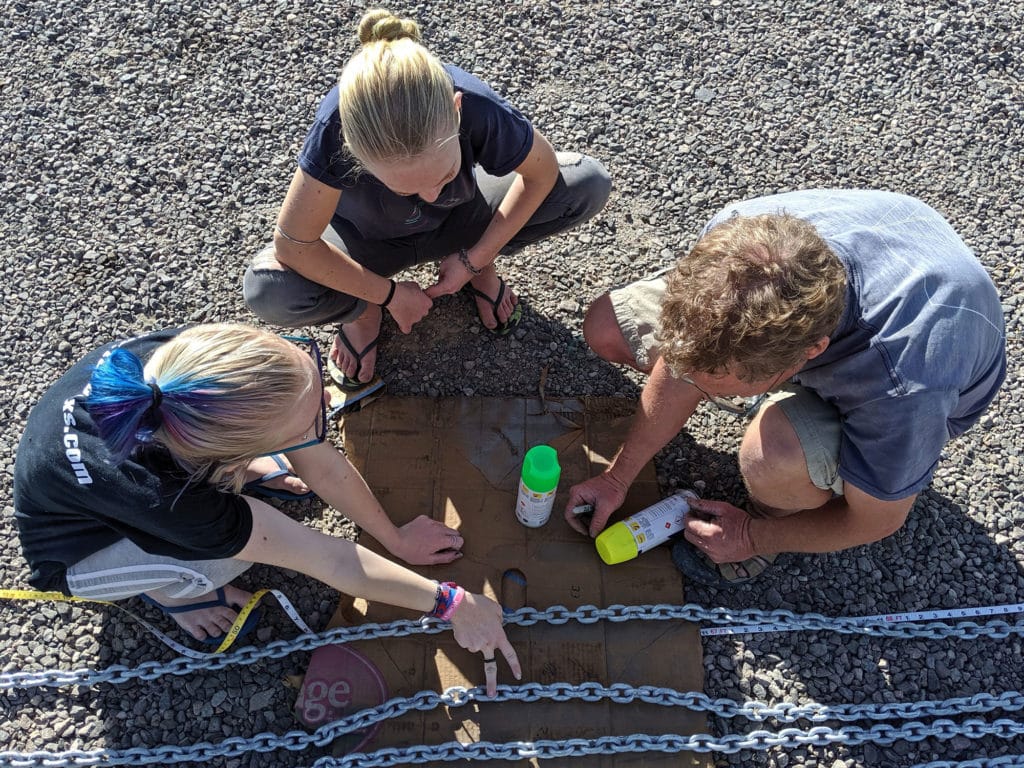
We’ve anchored a few times while sailing around the world. Ok, at this point, we’ve anchored 718 times in 41 countries and spent a couple of thousand nights at anchor. Safe anchoring includes knowing the ratio of your anchor rode to the anchorage depth; marking anchor chain is how most of us know how much chain we’ve put out as we set the hook. Over the years, we’ve used a few different methods for marking our chain. We’ve had the same 450 feet of 3⁄8-inch chain on Totem since purchasing her in 2007; the chain is due for replacement, with the opportunity to consider how we’ll mark it this time.
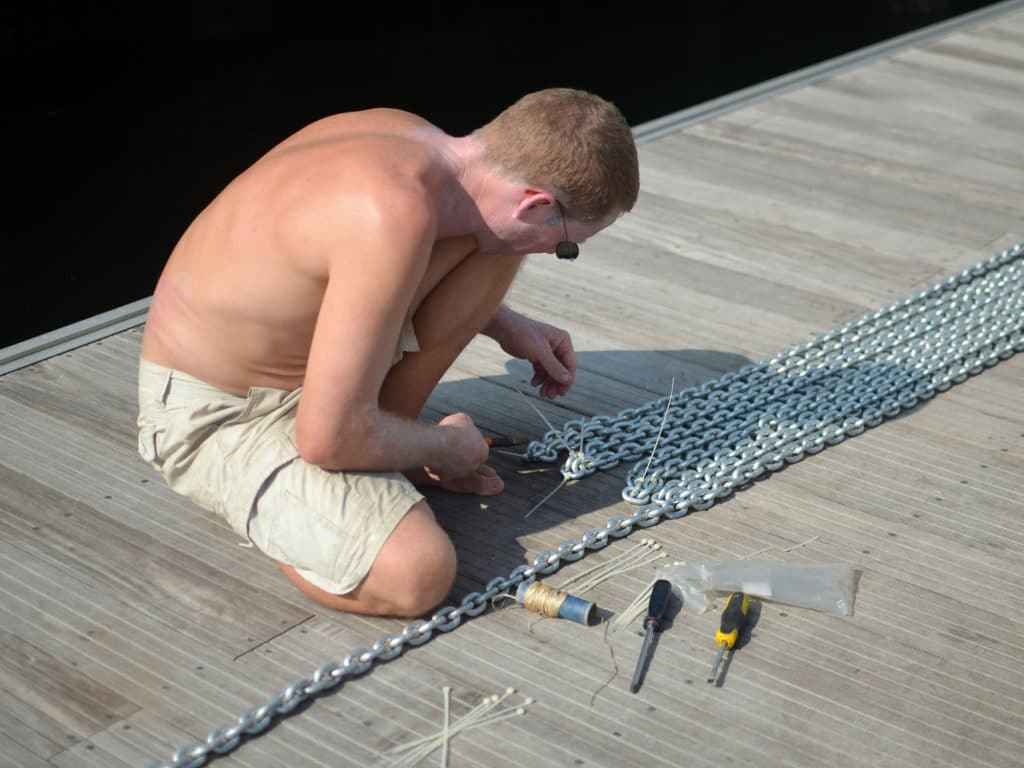
In the past, we’ve spray painted our chain in 50-foot increments. When we re-galvanized the chain in Malaysia, we attached zip ties to mark each 50-foot length. The problem is eventually both of these methods fail. And when they do fail, we have committed their contents – toxic paint and plastic – to the ocean. Maybe it’s a drop in the bucket, but our cumulative drops are a problem. While looking for a better way we took an interest in the method used by Expedition Sail’s yacht Seal during their years of regular anchoring along the rugged Alaskan coastline. They use webbing tabs, sewn on with waxed tread. Flat webbing is stitched through a chain at intervals. You can identify the distance measured in a few ways: use different colors of webbing at set intervals, or write a number on each tag with a sharpie (and periodically refresh it), or use multiple webbing tags at set intervals.
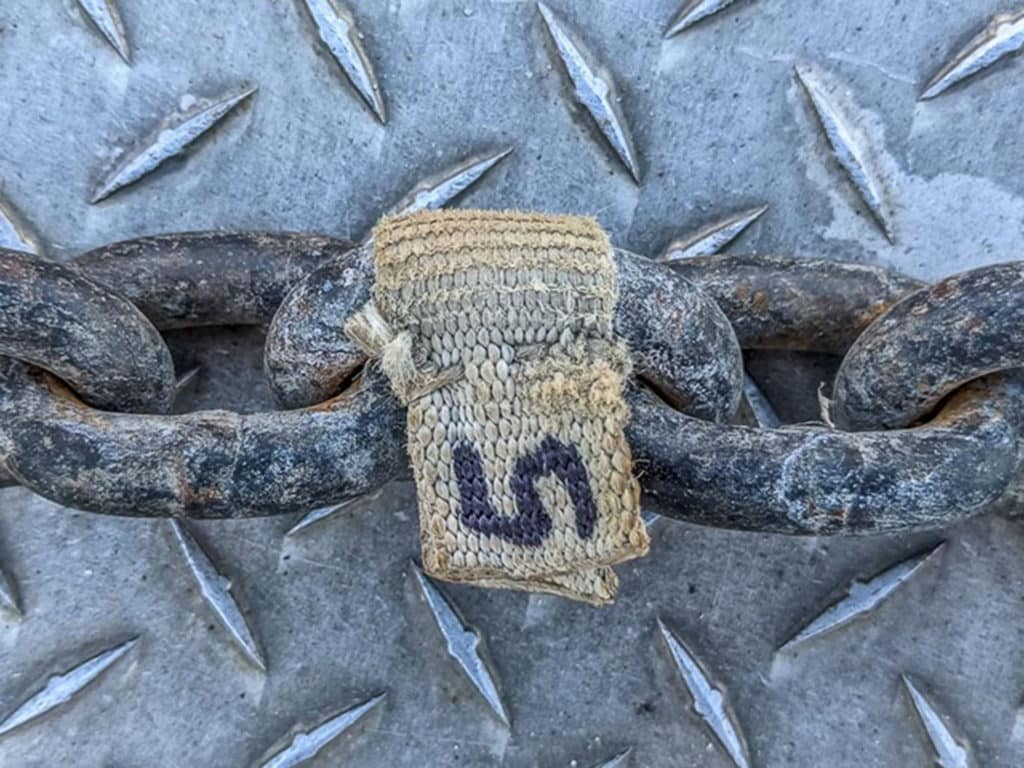
Onboard Seal, Kate Laird says that white, red and orange work well for visual cues but blue and green webbing become indistinguishable from each other. Picking contrasting colors helps. Laird prefers red, white and blue webbing. To add webbing tags to your anchor chain you’ll need a well-fitting, adjustable sailmakers palm; waxed thread or twine; needles in medium and heavier duty thicknesses; and 1 inch or 3⁄4 inch flat polyester webbing. Sailrite has a rainbow of colors available. Look for a good fit in your sailmakers palm as a bad fit can result in lingering pain. (Here’s a good one at Defender)
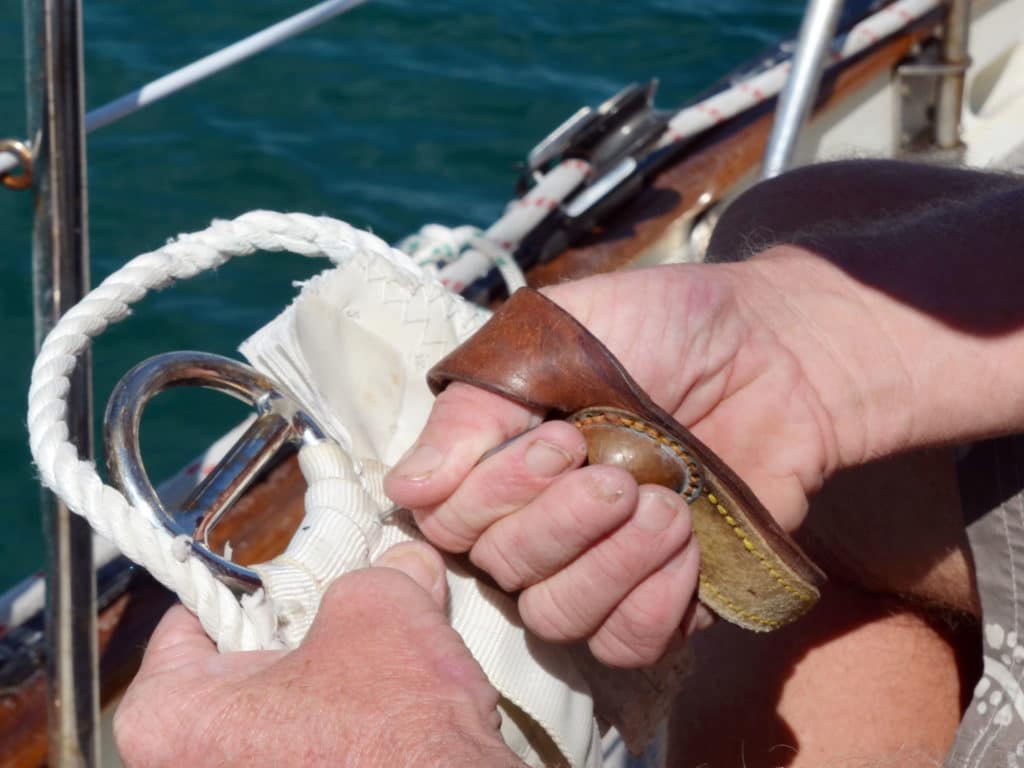
There’s no hard and fast rule for the size of the marked intervals. If you’re anchoring near coral heads, it may be important to have an early mark on the chain that helps with anchor placement (a mark that helps you estimate that moment when the anchor chain you’ve played out matches the depth, so you know where the anchor touched down). If you anchor regularly in shallow water, marks at shorter intervals help you get closer to the scope you want. Our choice has changed over time. In general we’ve marked our chain at 50-foot increments. Now we’re planning on marking it at 10-meter intervals. The intervals you mark should be placed where they help you get the scope right, based on the type of anchoring you do most.
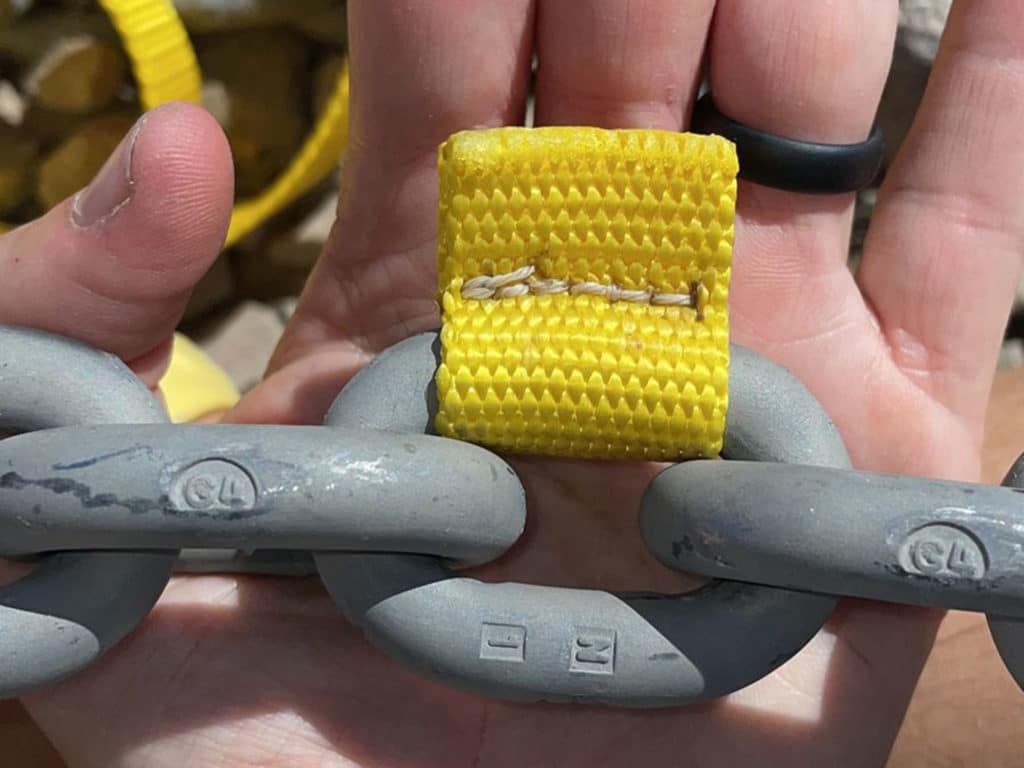
Does it last? Kate and her husband, Hamish, run high latitude expedition sailing charters on Seal. When they reversed their chain last spring the old tabs had been in for three or four years and were still visible. Another win compared to paint and zip ties.
Learn about anchoring
Our recent livestream covered anchoring and touched on a few issues with chain and rode among other tips, insights, and stories about anchoring in the wild. To learn about floating chain, when and how to set a stern anchor, and more expert advice for safe anchoring – click here to hear a replay for the session.








